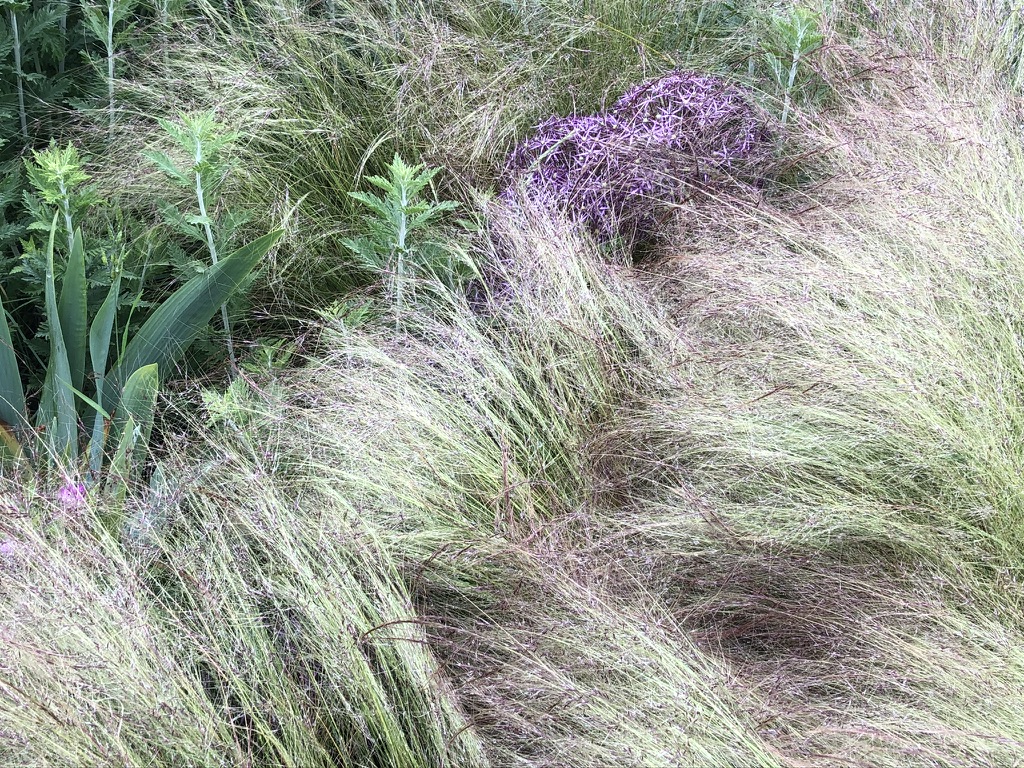Allowing time/one thing at a time
Good use, in the Alexander sense, is an attitude, a way of being, an endless exploration. It’s possibility instead of position, curiosity not correction. Our sense of time, and how we use ourselves in time, can shift from fraught to exploratory, from compressed to expansive, once we undo the habit of limited time.
We can easily observe the experiential effects of telling ourselves “I have time” as contrasted to “I don’t have time”. Collect your own data, beginning with low demand activities (rising from a chair) to increased demand activities (catching a bus). We can take the time to allow time for a new experience. This does not mean freezing or even “slowing down”. It only takes a micro-second to allow the time for a new response, a new means, a new solution. This is what lessons are all about: allowing time to pursue even basic activities in a different manner.
In the same temporal theme, multi-tasking (doing more than one activity at a time) is presented as a solution to rising demands of living. If we pursue multi-tasking , we have agreed to end-gaining as a means to accomplish “more” at the expense of the lessening of our entire neuro-physical response, a whole elastic system of attention developed over millennia. One thing at a time is how we work best.
When I’m walking, I am walking. Of course I can think or talk with my walking companion, and listen to birds, and see the sights of the world. I am designed to take in sensory data as I move through time and space. If I am walking while listening to a podcast or music, I am missing the sounds of the world that are my context for being. If I am doing a household chore and “distracting” myself by listening to a book, I am not attending to either activity. I am not allowing time and am attempting to do more than one thing in time. I have fractured my possibilities and limited curiosity to the outcome of achieving more.
We are mortal. Time is what we have, and attention is how we spend our precious coin of time. We can drain our time with hurry or by splitting our attention. But time won’t be retrievable once it’s gone. We’ve spent it in curiosity or correction, in possibility or position, in false certainty or amusing surprise.
We have time to allow time
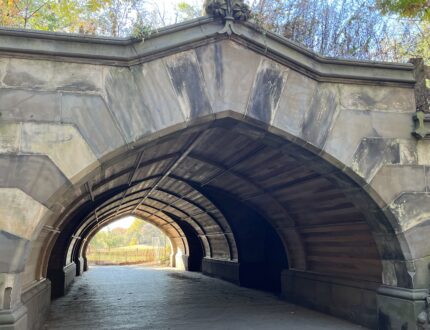
Allowing time when there’s too much time
Allowing time, even a macro-second, for a more overall elastic response is a familiar concept for Alexander students and teachers. We learn to welcome a dynamic pause, even in the face of seeming urgency. This skill begins with sitting and standing in a lesson and can proceed to all the activities of life.
“I have time” (to quiet, welcome new experience, spring up from the ground) takes on fresh meaning with a long term injury recovery. What I want to happen faster (full resumption of easy mobility) cannot be rushed. All that is hurried is my mind, and a hurried mind is no help in problem solving.
We can go quickly without hurrying and go slowly without freezing. There is no special value in a specific pace except for how pace best serves outcome. I have time to allow the pace that effectively serves a dynamic and quiet use of self. I have time not to pre-determine pace.
There are many adjustments required for a long recovery. Early in injury, all is in chaos, routines and expectations are dashed, and a sense of self in the world is shaken. I wanted to either go faster or go to sleep. But I learned a larger time can be accommodated, a longer view of pace and possibility.
Once I allowed time to plan tasks and transport, previously unconsidered solutions arose. Urgency became less important than overall co-ordination.
I have time to have time. Undefined weeks/months of recovery steps yawn before me. Telling myself “I don’t have time for this!” does nothing to help my effective use. I tighten, grip my limbs, furrow in worry. If, instead, I decide what I want, I can make choices that support that outcome. My attention prioritizes how to proceed rather than just pushing onward.
I have time to allow full recovery and time to make choices that make full recovery possible.
I have time.
4 legs on wheels
A new injury means, what else, further learning, creative problem solving and extended curiosity. Why waste a good crisis?
I recently fractured my foot in a quotidian manner. Stuff happens. While pain levels were nearly unnoticeable, distress for inactivity was high. Exploration of the world through thoughtful movement is my dedicated delight.
Medical recommendation for thorough bone healing: a minimum of 6 weeks with no weight bearing on the injured foot. (Note: I live in a 3rd floor walk-up and teach in a 2nd floor walk-up).
My primary intention was to safely resume in-person, hands-on teaching, as this engages all of me in a constructive manner. The intention of safety included how to descend and ascend stairs.
A rolling stool allowed me to have hands available as well as safe indoor movement. Crawling at home offered another safe option, as long as I allowed a lively, wide, breathing back to spring from my 4 limbs.
To descend and ascend stairs: arms and legs out of entire wide, breathing back as I scoot on my rear end up and down. Sort of a reverse crawl.
Teaching lessons from a rolling stool has been fun, productive and enlivening overall. A new experience!
I now think of myself as a 4 legged creature on wheels. From that moving, unfixed perspective, I am less distressed, more hopeful, ever curious and mobile despite injury restrictions.
Our conditions of self don’t have to be ideal for us to remain curious, elastic and thoughtful in activity. As demands increase, we can rise to meet them with less tension and more curiosity. This may not speed healing, but the journey holds more interest while healing occurs
Pain, pace and perspective
Being a student or teacher of the Alexander Technique does not guarantee avoidance of limitations in the condition of self. We age, injure ourselves, have accidents, develop unexpected health conditions, no matter how fabulous our use of self. Life keeps providing material for a new response. Our Alexander skills provide tools to meet the ongoing demands of living with curiosity.
Pain
Several autoimmune conditions diagnosed in recent years affect my formerly easy mobility. Walking has long been a source of delight as well as my primary mode of transport. What was previously reliably joyous is now, to varying degrees, laborious and painful.
Focusing on pain does not help me, as I then pull down, narrow my attention, and thus restrict respiratory support, clear thinking and connection to the world. If I choose instead to include pain in my overall experience, and kindly refuse to attempt to change pain directly, my experience shifts. Pain continues but no longer dominates. I can’t change disease activity, but I can choose my response to it. Then I welcome the world more, worry less, move along in the moment. Autonomy and acceptance are restored. Less energy is wasted in fighting conditions over which I have no control.
Pace
When pain is moderate to high, my pace changes. I am unable to walk at my preferred swift pace without limping or lurching, even more so if my attention is narrowed to pain. If I instead prioritize an elastic use of my entire self, getting there is less important than how I am getting there. I can allow best pace for current conditions of self, respect the limits of pain, and even enjoy and welcome a slower walk. Time passes in its usual manner, but I experience it differently. Frustration reduces as urgency quiets. And, sometimes, I can walk more quickly!
Perspective
Presetting posture, shape or some idealized perfection of “good use” typically reduces elasticity and the potential of a fluid response. There is no effective formula to prepare for the unexpected. If I brace for the worst pain, I may not recognize and celebrate new ease.
I want to keep walking, so I walk.
The essential pause: wait to worry
Our current times include concerns on a scale from personal to global and back again. Since life brings unexpected challenges and ongoing demands, there are ample opportunities to form a worry habit. Like any habit, the more we react to stimuli in a contracted manner, the more the habitual reaction becomes a default setting of sorts. Worry (or anger, irritation, impatience) begins to weave into who we are and how we move through life. We are using the instrument of self in the same way over and over again, bracing for uncertainty. This does not help us remain effective in response to the surprises of life.
Alexander tools of intention and attention can potentially improve our emotional regulation and reduce the seeming helplessness of habit.
We all think, move, feel and sense with our entire instrument of self. No mode (thought, sensation, movement, emotion) can be plucked out of the context of our integrated self. We have choice in response, but only if we allow the time and quiet to seek means of indirection.
With any worry, irritation, or impatience, I only recognize and name the emotion because of physical and mental cues: my facial muscles harden and narrow, I fix my shoulders, my attention shrinks. Heart rate increases, respiration becomes more shallow. Mental chatter gets noisier, looping unhelpfully. I am less aware of the space around me. Where can I begin to shift this experience?
Attempting to change an emotion directly (by repressing, ignoring or exploring) generally proves counter productive, and may even deepen worry mode. Directly changing a muscular response disrupts the entire balance of tone and is likely to produce undesirable results. You can’t change a part of the system without affecting the entire support system.
Asking for overall quiet begins to shift the gears. Allowing time and seeing/hearing outside myself shifts the rhythm of the gears. Less chatter, more connection and curiosity.
Change comes in increments. Allowing time is not a freeze but a chosen, momentary pause. Overall quiet is not a deadening but a broader curiosity: what might happen if I allow a moment before bracing? Can I allow my Alexander teacher to sit or stand me without worrying about getting it right? Noticing where my attention is and making a choice in that regard reduces the helplessness of habit. I can wait to worry, even for a heartbeat.
I have time to let the bus arrive, wait for lab results, board a plane according to rows. If I need to quiet, I can take a break from the news. While I allow time and quiet, new experiences might happen. The bus is late, but I hear seasonal bird songs. I don’t read the news and rush less to get ready for work. I can wait for information instead of bracing in advance, and remain effective in response.
I can choose my attention, allow intention to inform me, and see what happens next.
Happy curiosity works best.
Continued learning
The use of the self includes far more than posture, shape, movement quality and coordination. Use is an entire expression and response to the changes, shifts, demands and delights of life.
Students and teachers of the Alexander Technique refine the entire integrated instrument by which they learn. This refinement requires attention, intention and time, but not in a furrowed brow, “get it right” manner. Instead, we allow new solutions, beginning with simple activities (rising from a chair with surprising ease, for instance). We begin to more accurately see our habitually fixed responses so we can unfix, undo, allow a new mode. We seek dynamic non-interference, and welcome overall quieting. This is an incremental learning, as so much unlearning has to be dared. Use becomes an attitude, a way of living, as we take this shifting instrument of self into all of our activities. We become curious instead of critical, less fixed and perhaps more forgiving.
Due to a diagnosis requiring immediate pharmaceutical intervention, I was prescribed a high dose of steroidal medication. This class of drugs has many potential side effects, most notable being increased irritability and impatience. Now, I am by no means suggesting that Alexander skills have medical effects, or to make any health claims whatsoever, but I have found I can use these less than ideal conditions to continue to learn with Alexander principles as my guideline.
Since the medication amplifies emotional reactivity, I decided to see this as “good news”, which helped me allow curiosity. I have enhanced perception rather than enhanced reaction. Indeed, there are no “new” irritabilities; I am irritable and impatient about the same stuff, just more dramatically and noticeably! I have increased cues so I can allow a pause, welcome support from the ground, notice the movement of breath, and see the world outside of myself. I can notice more clearly how impatience is indicated by muscular fixing (face tightens, rhythm of breath changes). I don’t want to tighten and fix, and I can’t remain irritable if I don’t tighten and fix. There is my area of choice.
I ask for overall undoing. I forgive my many flaws. I welcome the data so I can continue learning how to learn.
Onward with the adventure.
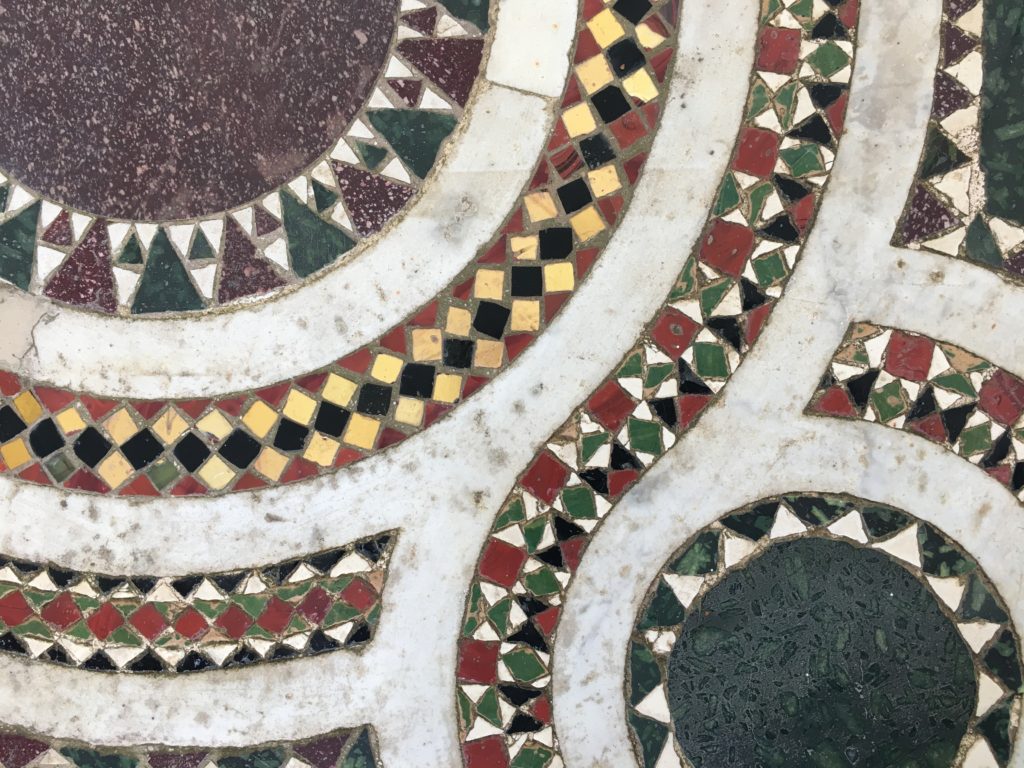
The rhythm of time
Months have passed, all a blur. Much has happened and nothing is predictable. We swim in a soup of uncertainty, treading water far from visible shores.
Perhaps we can mark time differently, detached from travel plans, daily transport, without performance schedules or rehearsals, in free fall from time expectations, bereft of our roles and how we costumed those roles. The world has changed, and our place in the world changes in response.
From an Alexander perspective, our choice is in dynamic non-interference, in getting out of the way so the entire self can respond to the conditions at hand. This is incredibly active. We refuse to make something happen so we can be effective participants in what does happen. We don’t impose a result, but insist upon new means. We want what we don’t know rather than what we believe we already know.
We stand in front of a chair, intending to sit. We can hurry to the sitting, freeze in getting this “right”, or allow a broader and unexpected experience, a new rhythm and pace of perception.
Allowing new experience anywhere allows new experience everywhere. We are connected, integrated systems, continuums of thought/sensation/emotion/movement. We unfix to welcome, we welcome to unfix.
Curiosity is more interesting than control. Receptivity works better than defense. The times in which we live demand all of our elasticity and requires our ease.
We rise from the chair as one elastic system, a unified response. We welcome these times with curiosity. We acknowledge unfathomable loss, and count on our endurance.
We welcome the rhythm of time.
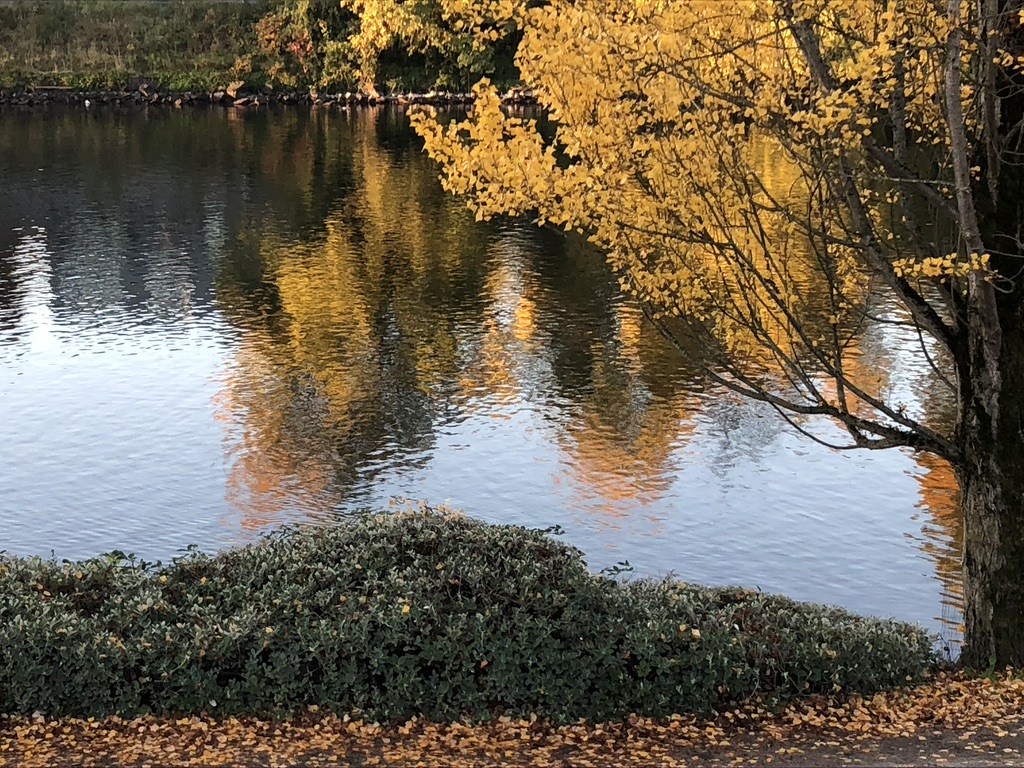
Unfixing for the long haul
As demands rise and needs for endurance increase, our habits of fixing into positions, reactions and patterns may amplify. This is our opportunity to notice our own individual bracing styles, and to request a more curious condition of self, not because our bracing style is “wrong”, but because habitual fixing may limit new experience, new solutions and new skills. Our best means may be un-fixing, de-positioning and active welcoming.
We can bring our best response to the increasingly complex demands of living if we brace less and allow overall elasticity and enlivening more. All of our instrument of self responds to everything. Collecting data and making decisions from data gives us a means to proceed most effectively. We can notice and decide, yet remain unfixed.
What happens to all of me when I request a more curious, connected and elastic self? If I notice data in a welcoming, non-critical manner, I can also decide not to change any of the data directly. I want a condition of self that is curious, connected and elastic, not a condition of self that narrows my attention to a specific outcome, even with what I notice. I get out of the way as best I can. A new experience is what interests me, given that conditions have changed, and only a new experience is possible.
We learn how to learn by actually learning, not by fixing into solutions from past experience. Everything is new now. Everything is pretty much always new. We can bring our fully lit up elastic selves to the party of ongoing newness.
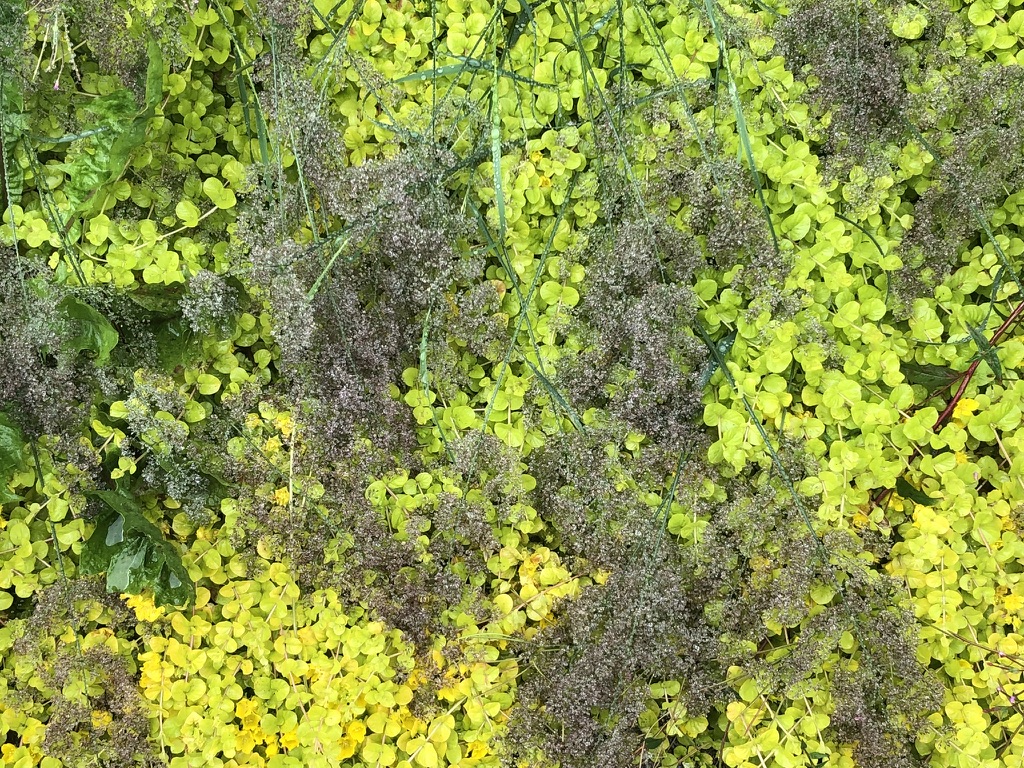
Entire expression
If we view the instrument of self as an inseparable and integrated whole, then a change in any aspect changes the entire self. We unfix overall to allow new solutions, means and experiences instead of directly addressing a part.
The entirety of our selves is shifted by face masks and coverings. We wear masks to care for our communities, and yet now we are partially hidden from one another. Perception and response modes change. We are in new social territory, with new cues, stresses and uncertainties.
Conditions have dramatically changed, and our dynamic response is essential so that we can remain calm, effective and creative. We gather data, relinquish being right, and allow the dynamic pause to notice how we do what we do.
If I smile or scowl, with or without a mask, all of me changes. When I smile, I widen and connect to the ground. I am typically seeing the world outside myself when I am smiling. When I scowl, I narrow and pull myself up from my neck/shoulders. My own chatter is primary while scowling. I can notice what happens when I smile or scowl and decide which experience I prefer. No judgement, no criticism, no moral compass. There is nothing inherently wrong about scowling or right about smiling, but both change the entirety of self.
Humans, crows, dogs may not be able to read my facial expression when I wear a mask, but I trust they can read an entire expression. I hope to learn to read everyone’s entire expression as these masked times continue. In times of tremendous change, we learn new skills, rise to increased demands, and continue to refine the instrument of self.
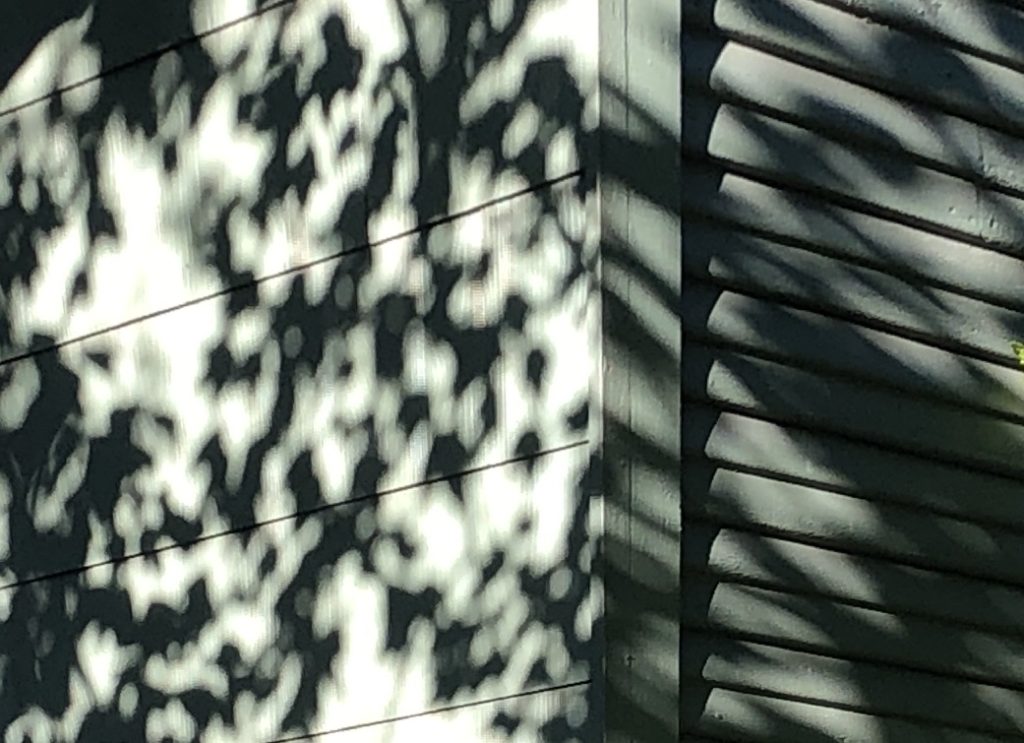
It’s not what you do, it’s how you undo
An essential and continuous skill of the Alexander Technique is the willing exploration of undoing to doing (without doing too much).
Undoing is a dynamic request to interfere less, reduce tension and amplify tone. Since we are integrated creatures with inseparable systems of thought/movement/sensation/emotion, we can request overall undoing through all aspects of self. All of me responds to a request to undo. All of me responds to everything.
Tone is necessary for engagement in the activities of living. Tone is also typically invisible. Tension is always obvious, whether tension is noted as mental, physical or emotional. Tension is not balanced by “relaxation”, which connotes deadening and withdrawal. Tension reduces as tonal balance and support increases. Undoing requires active de-positioning, un-placement, unpreparation and a cheerfully open curiosity, even in times of great uncertainty. We embrace not knowing everything in advance so we can allow a new knowing now.
Our globally shared era of uncertainty offers endless opportunities for dynamic undoing on a scale and depth previously unimaginable. All we have is our own instruments of self. If we tighten, collapse, reduce ourselves we are unlikely to respond well to shifting circumstances. Undoing as a basis may give us a chance. We won’t change the tumultuous times, but we may find means of contribution. We can begin with undoing, listening and dynamic non-interference, then proceed into doing, and refuse to interfere by doing too much.
